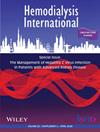Comparative Effectiveness of Cinacalcet Taken at-Home Versus Three Times Weekly In-Center on Controlling Calcium, Phosphate, and Parathyroid Hormone Levels
Abstract
Introduction
Chronic kidney disease-mineral and bone disorder (CKD-MBD), is a common syndrome in end stage kidney disease (ESKD) patients, is marked by dysregulation of electrolytes and hormones, including calcium, phosphorus and parathyroid hormone (PTH). Calcimemetics are a cornerstone of PTH lowering therapy; cinacalcet, an oral calcimemetic, is the most used and typically prescribed as a daily administration, thus contributing to the high total pill burden of this population. Recent clinical trials have provided evidence that administration of cinacalcet at the dialysis unit three times a week might be a safe and effective treatment option. In this study we sought to evaluate the comparative effectiveness of cinacalcet delivered daily at-home versus three times weekly in-center.
Methods
This was a retrospective matched cohort study of 2894 adult in-center hemodialysis patients a between January 01, 2008 and September 30, 2022 who were started on cinacalcet for the first time (group 1: at-home use or group 2: in-center administration). Patients were matched (1:1) on: age, body mass index, cinacalcet dose, and baseline phosphorous, calcium, and PTH. Patients were followed until censoring (i.e., lost to follow up) or 12 months after baseline, whichever occurred first. The primary outcome was achieving triple control of PTH, phosphorous, and calcium.
Results
Overall, the patients had a median patient age of 63 (IQR: 55, 71) years, were predominately Black (41.6%) and male (56.5%), and well matched on other baseline clinical and demographic characteristics, including etiology of ESKD. Fitted proportion model results show no statistical difference between the intermittent in-center or daily at home cinacalcet use group in achieving the primary outcome (triple control). The secondary outcomes of control of phosphorous or PTH, showed similar results. Calcium control was the same for 9 of 12 months, and better controlled in the in-center group during the remaining months.
Conclusion
In a well-matched cohort, no clinical difference exists between administering cinacalcet thrice weekly in-center and prescribing cinacalcet daily at-home.

 求助内容:
求助内容: 应助结果提醒方式:
应助结果提醒方式:


